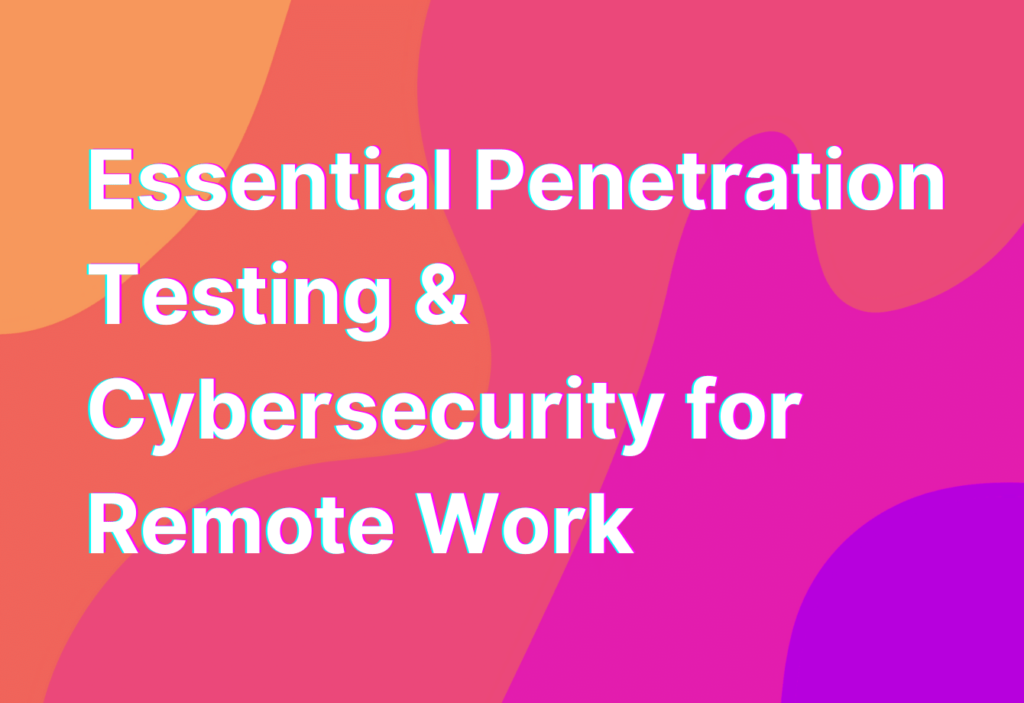Essential Penetration Testing & Cybersecurity for Remote Work
Hey there, remote work warriors! It’s Ashley here, your friendly remote work advocate with 10 years of experience in the tech industry. Today, I want to talk about a topic that is crucial for all remote workers: penetration testing and cybersecurity. As we navigate the digital landscape, it’s important to stay one step ahead of potential threats and protect our valuable data. So, grab your virtual armor and let’s dive into the world of cybersecurity!
What is Penetration Testing?
Before we delve into the nitty-gritty details, let’s start with the basics. Penetration testing, also known as pen testing, is a method of assessing the security of a computer system or network by simulating an attack from a malicious source. Think of it as a friendly hacker trying to break into your system to identify vulnerabilities before the real bad guys do.
Penetration testing involves a series of tests and assessments to identify weaknesses in your system’s defenses. It helps you understand the potential risks and vulnerabilities that could be exploited by cybercriminals. By conducting regular penetration tests, you can proactively address these vulnerabilities and strengthen your security measures.
The Importance of Penetration Testing for Remote Work
Now that we know what penetration testing is, let’s explore why it’s especially important for remote work. As remote workers, we rely heavily on digital tools and online platforms to collaborate, communicate, and access sensitive information. This increased reliance on technology also opens up new avenues for cyberattacks.
Remote workers often connect to company networks and access confidential data from various locations, including coffee shops, co-working spaces, and even their own homes. This flexibility and freedom come with inherent risks. Without proper security measures in place, remote workers and their employers are more susceptible to data breaches, malware attacks, and other cyber threats.
By conducting regular penetration tests, remote workers can identify potential vulnerabilities in their systems and take appropriate measures to mitigate the risks. It’s like having a virtual security guard who constantly checks for weak spots in your digital fortress.
Top 5 Penetration Testing Tools
Now that we understand the importance of penetration testing, let’s explore some of the top tools that can help us in our quest for cybersecurity:
- Nmap: This open-source network scanning tool is a must-have for any penetration tester. It allows you to discover hosts and services on a computer network, thus helping you identify potential entry points for attackers.
- Metasploit: Metasploit is a powerful framework that provides information about security vulnerabilities and aids in penetration testing. It offers a wide range of exploits, payloads, and auxiliary modules to simulate real-world attacks.
- Wireshark: Wireshark is a network protocol analyzer that captures and analyzes network traffic. It helps you identify any suspicious or malicious activities on your network, making it an essential tool for penetration testers.
- OWASP ZAP: The Open Web Application Security Project (OWASP) ZAP is a widely-used web application security scanner. It helps you identify vulnerabilities in web applications and APIs, allowing you to address them before they can be exploited.
- Burp Suite: Burp Suite is a comprehensive web application security testing platform. It combines various tools and functionalities to help you identify vulnerabilities, intercept and modify web traffic, and perform other essential tasks.
These are just a few of the many powerful tools available for penetration testing. Each tool has its own unique features and capabilities, so it’s important to choose the ones that best suit your specific needs and requirements.
Wrapping Up
As remote workers, it’s our responsibility to prioritize cybersecurity and protect our valuable data. Penetration testing is a crucial aspect of this process, as it helps us identify vulnerabilities and strengthen our defenses. By using the right tools and regularly conducting penetration tests, we can stay one step ahead of potential threats and ensure a secure remote work environment.
If you want to learn more about remote access cybersecurity and essential tips for remote work, check out this Remote access cybersecurity essential tips article on our website. It’s packed with valuable information to help you navigate the world of remote work securely.
Stay safe, stay secure, and keep rocking that remote work lifestyle!


